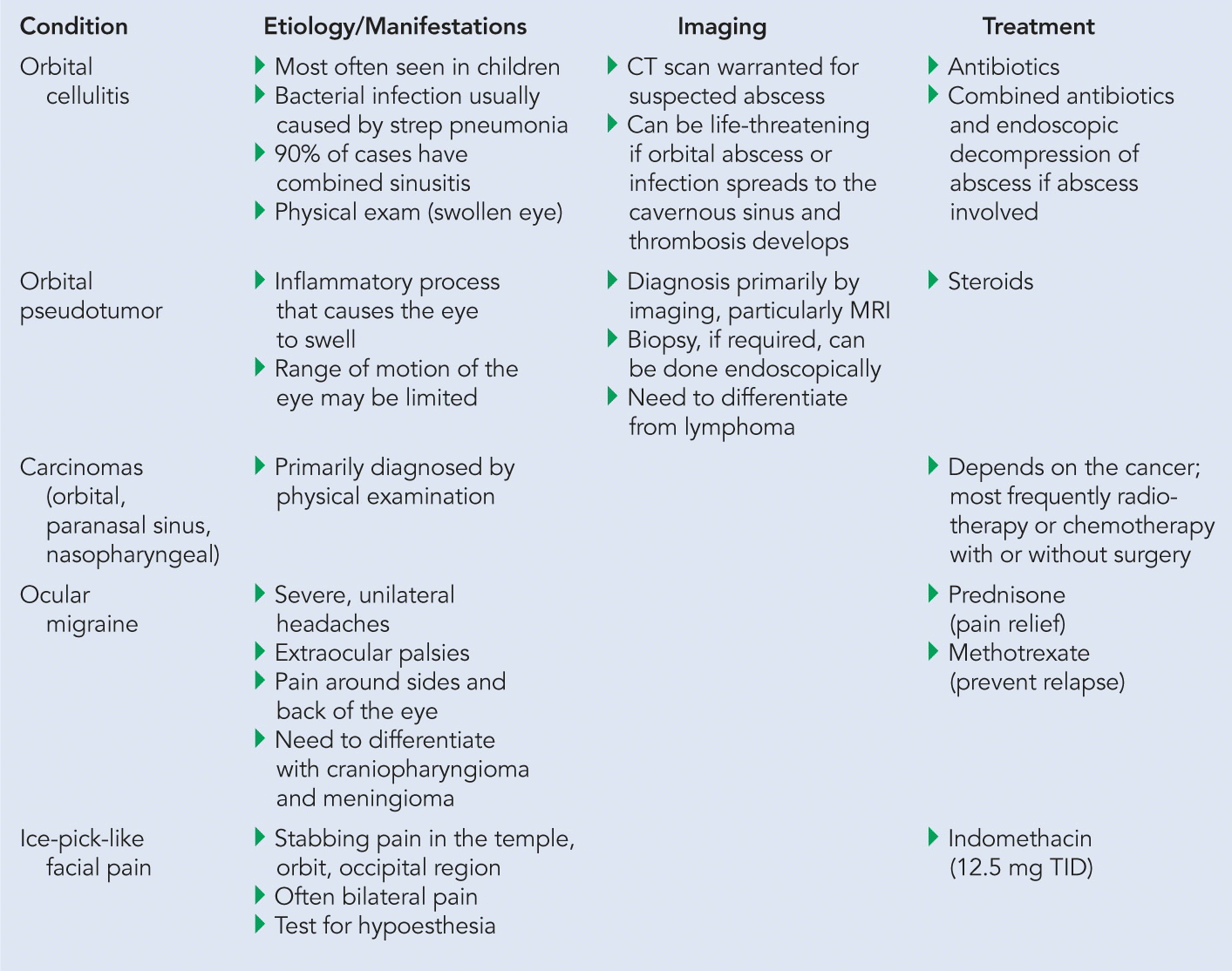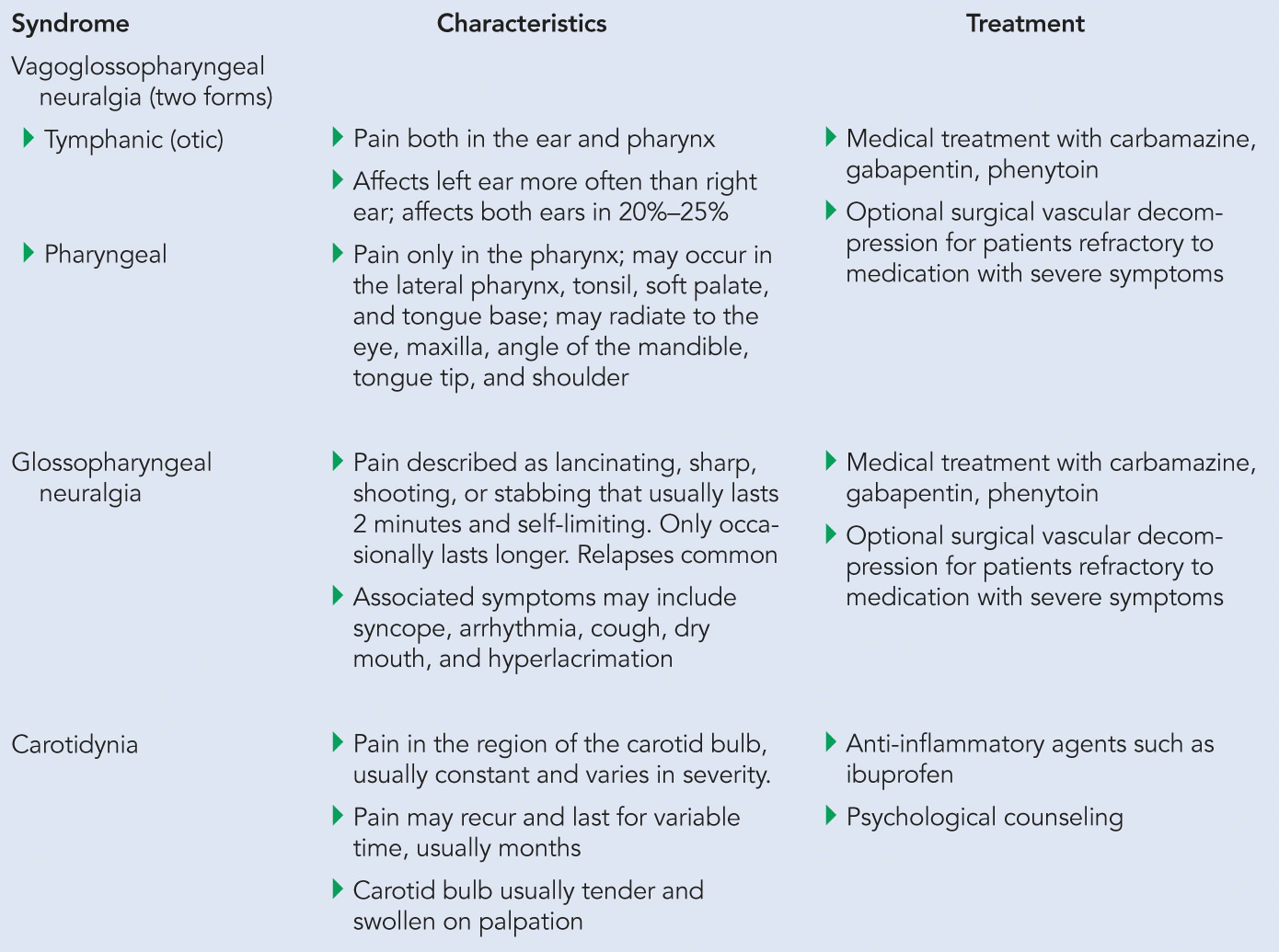When a person walks into an otolaryngologist’s office with pain in the head and neck area, the challenge to correctly identify the cause and treat appropriately is a large one and one that otolaryngologists face daily.
Explore This Issue
December 2009To help educate otolaryngologists on the different syndromes that can cause head and neck pain, a miniseminar on this topic, sponsored by the Academy of Otolaryngology-Head and Neck Surgery (AAO-HNS) Skull Base Committee, was held at the recent AAO-HNS annual meeting. According to moderator John P. Leonetti, MD, of the Department of Otolaryngology-Head and Neck Surgery at the Loyola University Center for Cranial Base Surgery in Maywood, IL, the need for such a seminar was proven by its high attendance.
Judging by how many people attended the seminar, he said, I think there may be a big void in our specialty on how to work up these various syndromes.
To fill this void, the panel of experts presented information on some of the most common pain syndromes otolaryngologists see, including orbital pain, vestibular migraines, and oropharyngeal pain.
Orbital Pain
Many conditions can cause orbital pain-both primary causes such as orbital cellulitis and secondary ones such as chronic sinusitis or allergic rhinitis. Making the differential diagnosis is basically a diagnosis of exclusion, said Lee A. Zimmer, MD, of the Department of Otolaryngology-Head and Neck Surgery at University of Cincinnati Medical Center.
Whenever you have a patient coming in with orbital pain, the first thing you want to do is a complete head and neck physical examination including a nasal endoscopy, he said, also emphasizing the need to see if a prior evaluation by an ophthalmologist or neurologist has been done.
Among the things to look for in the physical examination are any skin lesions around the eyes, which may indicate skin cancers around the eye that are affecting deeper tissues; any signs of chronic or acute sinusitis observed in the nasal cavity; and any signs of tumors or masses inside the nose that may be invading into or compressing the eye.
If the physical examination is normal, imaging is the next step to rule out (or in) other causes that may lead to orbital pain, such as intracranial tumors and meningiomas in particular.
If imaging doesn’t show anything, then he said to think about inflammatory processes, such as migraine pain syndromes or trigeminal neuralgia.
Table 1 lists some of the most common primary conditions causing orbital pain.
Overall, Dr. Zimmer emphasized that diagnosing and treating orbital pain requires a multidisciplinary approach involving otolaryngology, ophthalmology, neurology, and neurosurgery.
Vestibular Migraine
A pain syndrome that is becoming more recognized and therefore increasingly looked for is vestibular migraine, according to Peter Weber, MD, of the Department of Otolaryngology at the Cleveland Clinic.
Thought to be a genetic condition rather than a vascular event, vestibular migraine is characterized by headaches with central episodic vertigo. As such, differentiating this pain syndrome from Ménière’s disease, which can also be related to headache or migraine-type conditions in up to 30% of the cases, is important because of their different treatments.
Treatment is completely different, said Dr. Weber, adding that a typical case of Ménière’s disease is treated with a diuretic or low-salt diet, whereas medications to prevent headaches from developing are needed to treat a vestibular migraine.
If a patient has been treated appropriately for regular Ménière’s disease with no significant benefit and if they have a type of headache history typical of a migraine event, he said, the next step may be to try to treat for vesticular migraine.
Diagnosis rests on a careful headache history. According to Dr. Weber, in people with this syndrome, the headache creates the dizzy episode and/or fullness in the ears, hearing loss, or tinnitus. It can come before or after a dizzy episode or sometimes may occur at a different time.
The most effective treatment for this condition is prevention, with data suggesting improved efficacy with reduced side effects with the newer therapeutic agents topiramate (25 mg/day slowly titrated to 100 mg/day) or venlafaxine (37.5 mg/day slowly titrated to 150 mg/day). Other prophylactic agents that can be used include anticonvulsants (eg, divalproex), other antidepressants (eg, amitriptyline), and beta blockers (eg, propanolol, timolol).
Treatment of acute vertigo episodes include benzodiazepines (eg, lorazepam, diazepam) and agents to treat motion sickness (eg, promethazine, meclizine). Agents use to treat migraine headaches (eg, triptans) have no effect on the vertigo, said Dr. Weber.
Oropharyngeal Pain Syndrome
Of the four main causes of oropharyngeal pain-trauma, inflammation, cancer, and various syndromes-inflammation, predominantly due to viral infection, is the most common, according to Paul J. Donald, MD, of the Department of Otolaryngology-Head and Neck Surgery at University of California, Davis.
The key challenge in treating this type of oropharyngeal pain is to differentiate between viral and bacterial infections. Correct diagnosis can often be made by taking a careful history and thorough physical examination, said Dr. Donald. Signs of inflammation can include burning in the oropharynx by gastric acid or cricopharyngeal spasm.
It is important not to throw antibiotics at every inflammatory condition in the oropharynx just in case the cause may be bacterial, he said.
Trauma can also cause oropharyngeal pain, either by ingesting foreign bodies such as fish bones or by a blunt or penetrating (eg, knife or gunshot wound) trauma to the neck. Because a foreign body like a fish bone can scratch the pharyngeal muscosa long after the bone leaves the body, scanning is needed to show persistence or absence of the bone, said Dr. Donald.
Oropharyngeal pain that arises from cancer of the oropharynx will cause pain, especially when the cancer becomes ulcerated. Often the only symptom of cancer in this region will be ear pain arising from the Arnold’s and Jacobsen’s nerves.
Table 2 lists the various syndromes causing oropharyngeal pain and their distinguishing features.
One final syndrome that, according to Dr. Donald, has pretty much gone out of fashion, is Eagle’s Syndrome. A type of glossopharyngeal neuralgia, pain associated with this condition is often initiated by touching a trigger point, usually at the base of the tongue or in the lateral pharynx. Patients describe the pain as stabbing initially followed by burning sensation. Treatment can include topical application of cocaine to the pharynx or injection of xylocaine, or surgical treatment.
Dr. Donald no longer treats this syndrome surgically because of lack of long-term pain relief, and recommends psychological counseling for possible underlying anxiety or depression.
©2009 The Triological Society


Leave a Reply